
The 1950s in America was not a period known for its religious diversity. The spiritual consumerism that we know today had yet to be established and the post-War era was defined by adherence to familial and traditional values, including a religious conformity of traditional Catholic-Protestant beliefs (Ellwood 172). The Beat writers were among the minority of spiritual seekers in America at that time who pursued alternative forms of spirituality to supplement the existential longing that they were encountering in their own lives (Edington 3). Buddhism, though far removed from the American mainstream, offered each writer a method for reconnecting to the lost sense of spiritual nourishment their traditions and culture failed to provide. Each writer pursued his own path within Buddhist philosophy, and arrived at a distinctly different place as a result of his exploration. The Beat writers contributed to the development of American Buddhism through methods of appropriation and study, resulting in a body of literary and poetic work that reflects the ways in which the writers integrated Buddhist philosophy both in their personal lives as a spiritual practice and as a stylistic element used to enhance and inform their writing.
Even though the Beats were collectively referred to as a single entity by the early literary press, they were not characterized by singularity of idea; instead, they crafted a “spiritual eclecticism” that is evident in their writings (Prothero 13). Jack Kerouac’s religious upbringing in Catholicism and Allen Ginsberg’s Jewish heritage were both touchstones in the lives of the two writers that would manifest in their work alongside Eastern forms of spirituality. This led to the juxtaposition of religious imagery in their written work and, ultimately, to the creation of a new synthesis referred to as “Beat Spirituality.” This Beat Spirituality would be as much informed by Buddhist and Hindu traditions as it would be by the religious backgrounds of the writers who contributed to it (Gerald Nicosia). Buddhism would become for the Beats an approach for reconciling the existential turmoil in their private lives and their shared skepticism of the dominant culture.
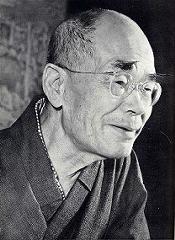
This growing interest in Zen Buddhism coincided and in some ways directly fostered the Beat interest in Buddhism. Allen Ginsberg came to know Buddhism first through Raymond Weaver, a professor at Columbia, who discussed koans, or paradoxical word problems that are used as a method of awakening, in his classes. Weaver recommended Buddhism to Allen, who then visited the First Zen Institute of New York City in 1953 where he examined the Chinese paintings and books on Zen in the library (Schumacher 153). His initial reaction to Buddhism through the Institute was slightly unpleasant and he likened the atmosphere to a university club and felt unwelcomed.
However, he had discovered something of value—a collection of essays by D.T. Suzuki, Buddhism in the Philosophical Library Series. In this work, Allen read passages on the Zen satori, or enlightenment experience, that greatly interested him (Charters 191). It was in part due to a vision he had almost five years earlier when he experienced a spontaneous poetic elaboration in a visionary experience involving the poet William Blake that left him inspired and confused. The concept of satori in Suzuki’s work matched up perfectly with the nature of his Blake vision and provided a new context with which to pursue his mystical inquiries.
Allen was so taken with the Chinese paintings and Buddhist teachings he discovered in the First Zen Institute’s library that he composed a brief poem, his first incorporating the themes and images of Eastern philosophy, “Sakyamuni Coming Out From the Mountain” (Schumacher 154). This initial fruitful encounter with Buddhism inspired Ginsberg to share his findings with his friends and he told Jack Kerouac about the essays and then sent a book of Zen stories to his friend, Neal Cassady. Kerouac was not immediately interested in what Ginsberg had told him but he would go on to become one of the most vocal members of the Beats to advocate the dharma and the study of Buddhism.
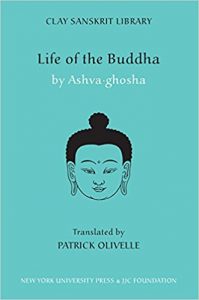
In San Jose, where he was staying when he looked up Buddhism for the first time, Kerouac was also engaging his close friend Neal Cassady in an ongoing religious debate on the merits of popular psychic Edgar Cayce, who is renowned for having popularized New Age theory and methods in the mid-twentieth century. The emotional turmoil that the arguments generated further contributed to the allegiance Kerouac was developing with Buddhism. It was through these debates, biographer Ann Charter proposes, that Kerouac “came to know that the words of the Buddha made sense” (192).
In addition to reading and research, Kerouac was also avidly taking notes on the subjects he was studying. By the end of a single month, he had generated almost a hundred pages of notes and quotations from the sutras and other texts. He wrote his friend Allen Ginsberg and encouraged him to study Buddhism, providing lists of texts he should read. Kerouac eventually began a teaching relationship with Ginsberg where Kerouac had demanded his friend’s complete faith as a teacher on Buddhist subjects while he himself was still a novice.
The total body of notes that he had organized, Kerouac told his friend, should be organized into a manuscript called Some of the Dharma, making the teachings of Buddhism available to anyone who wanted them (Schumacher 194). Kerouac was ambitious about his plans to study Buddhism. He located his interest in the philosophy, stating that he was concerned mostly with training his mind on emptiness and taking care of the body (Tonkinson 47). After he moved out of San Jose he composed a series of poems he called “San Francisco Blues” which included the two first Buddhist references made in his writing (Charters 199). The decision to include Buddhism in his writing established a thematic presence that he would develop for the next decade.
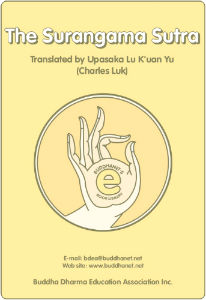
Kerouac was functioning as a guide for Ginsberg into the dharma realms, though he admitted to Ginsberg his personal reservations that the philosophy was a little too ascetic. He also stated a desire to be closer with Chinese philosophy and Taoism, one of the great religions of ancient China. This fluctuation in commitment and devotion would remain an extenuating circumstance that would continue to characterize Kerouac’s relationship with Buddhism throughout his life.
Buddhism and Taoism provided justification in Kerouac’s lifelong view of himself, confirming a belief that he was unfit or not strong enough to live a conventional life (Charters 197). Circumstantially, the events of his life during this period of uncertainty reflect a different set of concerns governing his principals. In early May, 1954, Kerouac was binging on alcohol and sex, only to renounce his behavior at a later time as irresponsible and return to his study of Buddhism. Several months after this period he decided to commit to an intensive practice to replace his textual study (Charters 197).
Some contradictions are evidence of the sort of wavering affair Kerouac maintained with his interest in Buddhism. It is not uncommon to find a certain insecurity that accompanied his genuine eagerness to learn and practice. Despite his insecurities, it was eagerness that inspired him to set goals for himself. He became so devoted to the idea of practicing Buddhism that in 1954 he wrote in a notebook his plan to attain enlightenment by the year 2000 (Tonkinson 30). On a trip to his hometown of Lowell, Massachusetts, Kerouac had a revelation that resulted in his conceptual adaption of the word “beat” where he redefined it to coincide more with the term “beatitude” and the sense of religious devotion he identified with at the time. It was after this visit home that he became staunch in his desire to live in accord with Buddhism.
However, Kerouac was deterred by some of his closest family members who chided him for leaving his traditional faith. In May, 1954, while deeply immersed in Buddhist philosophy, Kerouac’s mother criticized him for undertaking a study-practice of Buddhism and he met resistance when he spoke of the sutras or meditation at home (Charters 217). However much his debaucheries and the criticism from his mother prevented him from engaging his practice whole-heartedly, Kerouac remained forthright in his religious studies. In addition to reading a chapter of The Diamond Sutra every day of the week, he also had a meditation routine where he experienced the bliss conceived of in the sutras.

Much to the detriment of his practice, he experienced pain in his legs when he sat down to meditate. This was due in large part to phlebitis, or blood clots, which resulted from his use of amphetamines. Despite the excruciating pain, Kerouac remained resolute in his meditation routine and felt bliss when he sat. He wrote about his meditation experiences in a poem that he called “How to Meditate.” His discipline remained unwavering into the spring of 1955 when he wrote a biography of the historical Buddha, Siddartha Gautama, which he titled Wake Up (Charters 220).
Kerouac became so devoted to his dharma practice that for a brief interlude of a few months he considered following the life of an ascetic, living a solitary existence in complete harmony with the tenants of the Buddha-Dharma. In addition to this, his commitment to Buddhism was apparent in the notes he was accumulating for Some of the Dharma. What began as a hundred or so pages had grown to become a large loose-leaf folder of several hundred pages of his personal reflections, quotes, and collections of poems. He also spent a good deal of time translatingBuddha Tells Us. This intellectual rigor he considered a labor of Mahayana Buddhism which was one of the three vehicles or schools in Buddhism that attracted him for its emphasis on compassion (Charters 221).
This period of engagement with Buddhist philosophy would eventually lead Kerouac to begin incorporating Buddhism into his writing. Although he initially found a lack of support from his publishers on his proposed projects, Wake Up and Some of the Dharma, he remained committed to expounding upon what he had learned. On a trip to New York City he met with friends in bars, drinking heavily and discussing Buddhism with whomever would lend an ear. The lip-service that Kerouac offered on behalf of the Buddha fell on deaf ears, and Kerouac found that his socializing was interfering with his commitment to practice (Charters 222).
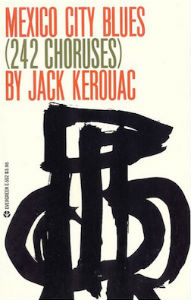
These religious personas provide a reference for understanding Kerouac’s idea of spiritual relevance. It is within this text that he defines himself as a spiritual seeker, which did not dilute his devotion to Buddhism. Instead, Mexico City Blues demonstrates the author’s curiosities and serves to denote his progress in spiritual pursuits. Although a pluralistic inclusion is apparent in the work, Kerouac’s allegiance was decidedly Buddhist during this period. In addition to this, he found the need to create a synthesis between Eastern and Western, a synthesis that was as much defined by cultural references as it was by religious imagery. He juxtaposed images of the Buddha against jazz-saxophonist Charlie Parker, whose improvised music reminded Kerouac of the great liberation discussed in the sutras (Charter 228).
The time spent in Mexico City also inspired Kerouac to write Tristessa, which pivots around his experiences with a Mexican prostitute. This novel is considered to be a part of the semi-fictional Buddhist-inspired canon that Kerouac developed. It returns the author to his use of real characters and events that are transformed and embellished in a fictional manner. Kerouac wrote the book feeling that it was representational of the first noble truth of Buddhism, which was presented by the historical Shakyamuni Buddha as “life is suffering.” The Four Noble Truths are the foundation of Buddhism and provide a method for orienting the self in a relationship to life that leads to actualized truth and relieved suffering. The following three truths state that although life contains suffering, suffering can be diminished or relieved by following the Eight Fold Path (The Four Noble Truths).
Allen Ginsberg was living in San Francisco by the time Jack Kerouac finished his two works in Mexico City in August of 1955 (Charters 233). Ready for a change of pace, Kerouac traveled to San Francisco to visit and engage his friend in dialogues on Buddhism and writing. By the time Kerouac arrived, Ginsberg had been imbedded in the San Francisco poetry scene and was conversing on a regular basis with a pair of poets, Gary Snyder and Philip Whalen. Ginsberg was referred to Snyder and Whalen by Kenneth Rexroth, a poet prominent in the San Francisco poetry scene, who Ginsberg had relied on to make his literary acquaintances (Schumacher 212).
Snyder and Whalen were graduates from Reed College in Portland, Oregon, and similarly interested in Buddhist studies. They had met in 1946 on campus at Reed College and their friendship centered on a shared interest in Asian studies and Buddhism. By the time the two had met, Whalen had been practicing Zazen meditation (a Zen sitting practice where the meditator counts his or her breath) for four years. His interest in Buddhism was connected to his brief affair with Vedanta, a Hindu spiritual tradition concerned with actualizing unity with God or Brahman, and the subsequent Asian eclecticism he was exposed to through his autonomous studies (Suiter 68). However, his practice was without introduction to the tradition of Zen until he met Gary Snyder. Their friendship brought Snyder to share a D.T. Suzuki book with Whalen, who was immediately attracted to the simplicity of Zen philosophy. For Snyder, Zen had been an interest and lifestyle he had courted since his days at Reed College, where he was introduced to Buddhism by professors David H. French and Lloyd Snyder (Suiter 18). Whalen had gotten his early exposure to Buddhism through the works of Theosophist Madame Blavatsky, whom he had discovered at the public library during high school.
Like the other Beats with whom he would come to share the dharma, Gary Snyder had an adventurous spirit. Before leaving the anthropology program at Indiana University in Bloomington to commit to his Zen practice, Snyder took a job as a fire look-out stationed in the Nevada Mountains (Suiter 20). Reading Suzuki and performing his tasks as a look-out, Snyder was steeped in the traditional Zen lifestyle of study, Zazen, and a simple approach to daily life. The influence of D.T. Suzuki’s essays that he kept with him at this time and the traditional mythic stories of Zen masters in Japan, as well as Suzuki’s description of satori (or awakening), would sway him away from his academic studies and prepare him for a rigorous Zen practice abroad.
Gary Snyder was still a novice by the time he took a job at Crater Mountain in 1952. He had experience with Zazen meditation as far back as 1949, though the young practitioner was unsure of himself without the aid of formal instruction from a teacher. In order to supplement the guidance of a Zen Master, he used written instructions and modeled his posture after statues he had seen of Buddhas in Portland and San Francisco (Suiter 30). He used the period at Crater Mountain as a way of solidifying his commitment to learning Zen. However, his insecurity of practicing without a teacher was confirmed by his experience at Crater Mountain.
As soon as the fire look-out season ended in mid-August of 1952, Snyder joined the First Zen Institute of America, which was at the time the only American society organized around teaching formal Rinzai Zen. The institute, led by Ruth Fuller Sasaki, was appointed to carry on the dharma after her husband Sokie-an died. Snyder began a correspondence with Sasaki that led to a scholarship that would help him study Zen in Kyoto, Japan, with teacher Miura Isshu. However, the political climate in America was heavily influenced by the practice of red-baiting and communist paranoia, and Snyder was denied a passport from the State Department in 1955 under suspicion of being a communist (Suiter 124). Snyder finally received his passport and left for Japan on May 6, 1956.
In the meantime, while waiting for his passport, Snyder spent afternoons with Allen Ginsberg at his Berkeley cottage. The writers conversed over wine, sometimes in the small shack that Snyder was living in that was modified to match the minimalist lifestyle of a Buddhist ascetic. Kerouac was still in San Francisco and visiting with Ginsberg. The coincidence of his arrival signified an important moment in his life as he forged a close intellectual and spiritual kinship almost immediately with Gary Snyder.
The conversations that occurred between the poets in San Francisco during this period often centered on Buddhism and were referred to as “Dharma confrontation” by Ginsberg. These dialogues helped orient the writers in their moral and philosophical positions within Buddhism (Fields 214). This juncture between poets signified an important moment in the lives of the writers from the two coastal literary scenes (Prothero 16). It would be through the friendships established during this period that Buddhism and Beat writing would undergo its most fertile synthesis.
For Kerouac, the time he spent with the group of Beat poets yielded prime material for creative work and had implications for his immediate life. Kerouac admired Snyder for his dedication and religious discipline and Snyder maintained an influential role on Kerouac’s interpretation of Buddhism (Charters 264). Through his relationship with Snyder, Kerouac was able to carve out a niche in his orientation to Buddhism by sharply distinguishing himself as a follower of the Hinayana school of Buddhism, which emphasized the liberation of the individual practitioner while categorizing his friend as a Mahayanist, which placed a great deal of importance on compassion and relieving the suffering of sentient beings (Charters 263).

Though the distinctions may be true, for Kerouac, they were crucial in the formation of his religious identity. The Four Noble Truths and the emphasis on compassion were of primary interest to him (Charters 190). The consolation he found in the first noble truth on suffering and the Buddhist emphasis on compassion would directly relate to his ability to preserve his Catholic background while exploring the alternative view Buddhism supplied him (Charters 190). This need to reconcile religious identity is evident in Mexico City Blues where he juxtaposes the images of compassionate religious figures like Siddhartha Gautama with Christ (Kerouac 15). The dual reference to Christ and Buddha characterizes Kerouac as a spiritual eclectic and reifies his existential seeking in Buddhism while preserving his Catholic heritage.
The stories that Snyder and Whalen shared with Kerouac about their Zen practice and experiences working as fire look-outs inspired Kerouac to apply for a job in the Mount Baker National Forest in 1955 (Suiter 179). His plan was to use the solitude to write and study the dharma, along with meditation. Before he was supplied with a job as a fire look-out, Kerouac wrote the Scripture of the Golden Eternity at the urging of Snyder. The document served as a religious expression of Kerouac’s unique synthesis between Catholicism and Buddhism (Tonkinson 215). He was stationed to serve at Desolation Lookout on February 6, 1955, with only one book to occupy his time—a copy of The Buddhist Bible by Dwight Goddard. The intensity of solitude and boredom that ensued caused the novelty of asceticism to wear off within ten days (Suiter 210).

It was at his station on Desolation Lookout that Kerouac admitted to himself that the sobriety of Buddhism and asceticism of the Zen monk’s life was counterpoised to his desires for sex and drugs (Suiter 223). He was indeed deeply entrenched in his own lifestyle and found that Buddhism could offer him only existential relief and failed to relieve him of his material cravings. Despite his difficulties with loneliness and isolation from the outside world, Kerouac remained committed and began to write an adaption of The Diamond Sutra for the western mind.
The culmination of the time Kerouac spent with Gary Snyder and the other Beats in San Francisco resulted in The Dharma Bums which he wrote in November, 1956. Using his transcriptions of conversations, notes from readings, and letters from Whalen and Snyder, which he collectively called his “Dharma journals” (Suiter 229), Kerouac began the book on November 26 and finished on December 6, incorporating elements of his experiences with Snyder, Whalen, and Ginsberg that followed his style of the semi-autobiographical narrative. This book glorified the notion of dharma practice and somewhat inaccurately portrayed the Zen lifestyle as debauched and undisciplined. The references Kerouac made to sexual promiscuities and substance use only occurred circumstantially and had little written context involving Buddhism.
One such incident that Kerouac was chided over by his friend, Snyder, was in regards to his literary representation of the Yab-Yum ceremonial orgy enacted at the residence of Japhy Ryder, a character based on Gary Snyder (Kerouac 22). Snyder criticized Kerouac for his inaccurate and sacrilegious interpretation of the Tibetan ritual and for degrading the status of his own Buddhist lifestyle, confusing the open sexual exploits they had engaged in with authentic Buddhism.

For Kerouac, however, his new book could not have been written at a better time. Three months before The Dharma Bums was published, Time Magazine released a special edition specifically on Zen and said that “Zen Buddhism is growing more chic by the moment” (Tonkinson xvii.). The cultural fad of Zen coincided with Kerouac’s wish to spread the dharma. He even said he wrote The Dharma Bums with the intention of popularizing Buddhism in America (Tonkinson xviii.).
The Dharma Bums would go on to influence a generation of spiritual seekers and counter-cultural reformers in the 1960s who used the book to guide them through their existential and social crises. The book helped facilitate the emerging value structures that were represented by freedom from life’s social constraints during the 1960s (Tonkinson 61). Scholar and author of Buddhism in America, Richard Hughes Seager, credits Kerouac for helping to establish a model of the non-conformist religious practitioner which helped create the cultural image of the counter-cultural seeker, in part preserving his legacy for a future generation of American seekers with The Dharma Bums (42).
Gary Snyder returned from his extended Zen studies in Japan in 1958 and lived in a small shack in Mill Valley, California. He used his formal training as an opportunity to spread the dharma from his home and facilitated a small study group, or zazenkai, where people regularly practiced the traditional Zen meditation that Snyder had been trained in (Tonkinson 219).

In addition to his contribution in The Chicago Review in 1958, Snyder translated a traditional Chinese Zen work of Han Shan’s and had it published under the same title Cold Mountain Poems (Fields 214). Later that year, Snyder returned to Japan where he undertook seven years of formal Zen study, attending sesshins and committing intermittently to monastic life (Fields 222). By the time he returned in 1966, the cultural landscape of America had been dramatically altered, both by the Vietnam War and by the counter-culture movement (Fields 248).
The aftermath of Kerouac’s success with The Dharma Bums was met with a negative reception. The author grew disappointed with naïve notions he subscribed to only a few years earlier and reported to Snyder about his ambivalence concerning a Buddhist revolution in America (Suiter 242). After much criticism from the literary press and associates of his own, Kerouac proclaimed to Whalen in San Francisco that he was finished with Buddhism:
“I’m not a Buddhist anymore, I’m not anything. I don’t care. I do care about hearts,” (Suiter 243).
Kerouac’s interest in Buddhism faded as quickly as it had begun. A religious confusion characterized his relationship with the religion during the years of his study and practice, part of which opposed his Catholic heritage and religious upbringing. In fact, it was with as much fervor and interest that Kerouac had begun his study of the dharma that he denounced his affiliation with Buddhism entirely:
“Buddhism is just words. Also wisdom is heartless. I quit Buddhism because Buddhism, or Mahayana Buddhism, preaches against entanglement with women. To me, the most important thing in life is love” (Tonkinson 83).
By the 1960s, Kerouac claimed that his interest in Buddhism, which had been characterized by passionate learning and public advocacy, had diminished significantly and he stated that he was “sick” of the subject (Charters 339).
Scholar and literary critic Ben Giamo claimed Kerouac’s religious inconsistency can be understood as a “spiritual struggle.” Giamo states that Kerouac, as “A lapsed Catholic pre-Vatican II figure with pagan impulses and a medieval load on his conscience” was liberated under “the secular strife of the modernist era” (Lott 174). In this context, Buddhism can be understood as Kerouac’s device for achieving freedom, creatively and spiritually, both qualities that his traditional Catholic heritage could not support.
Biographer Ann Charters believed that Kerouac can be understood as a religious and literary figure much more simply, and states that “Kerouac was always a believing Catholic; he was just a self-taught Buddhist for a while” (190). Charters established in Kerouac: A Biography that the writer felt consolation from Buddhism for the disappointment in his life and that his attraction was to the noble truths for the spiritual context they provided him in light of his own suffering (190). His relationship to Buddhism can be understood as a form of philosophical inquiry that supplemented his existential questions regarding the death of his brother Gerard, in addition to his curiosity involving deeper explanations for the meaning of life. Thus, however transient his affair with Buddhist philosophy, Kerouac undertook a disciplined approach to its study and for a brief while committed himself to exploring and applying the truths he discovered therein to his life.
Allen Ginsberg, having visited the First Zen Institute of New York in 1953 had already been exposed to the basic tenants of Buddhism. In addition to his brief independent study of Zen, he had also been instructed by his group of literary friends, including Kerouac, Snyder, and Whalen, years before he began his own serious spiritual inquiry into East-Asian traditions. In 1958, Ginsberg met D.T. Suzuki and, influenced by a conversation on the impermanent nature of life, wrote some of his first Buddhism-inspired poems called “Funny Death” and “Ignu” (Schumacher 295).
Ultimately, it would be his experimental drug usage and hallucinatory experiences that would lead him to pursue a spiritual path. In fact, after a visit to his dentist that involved sedation, Ginsberg synthesized Buddhist concepts of birth and death dualities and the void (a central concept in Buddhism referred to as Shunyata, or emptiness; it is believed to be the ground of all being) with his experience of nitrous oxide in a poem called “Laughing Gas” (Schumacher 296).
Ginsberg went on a pilgrimage to India in 1962 with his literary friend Gary Snyder, Joanne Kyger, and his partner, Peter Orlovsky. It was on this religious sojourn which led him throughout Asia to places like India and Tibet where he met the Dalai Lama, gained initial exposure to Tibetan Buddhism, and conversed with Hindu guru, Swami Shivananda (Schumacher 376). All the while, Ginsberg was connecting the spiritual insight he received to his own personal experiences of hallucinatory visions which had been a primary motivation behind his searching. He received confirmation on his visionary experiences from a Tibetan lama, Dudjom Rinpoche, who instructed him on the nature of impermanence and non-attachment (Schumacher 379).
Contemplating his journey after coming home, Ginsberg reflected on his experiences traveling abroad and his vision quests (Schumacher 394). He arrived at a conclusion of his spiritual inquiries that would sustain him into the second part of his life: Decisively, he thought, it was his heart and the present moment he aspired and yearned for.
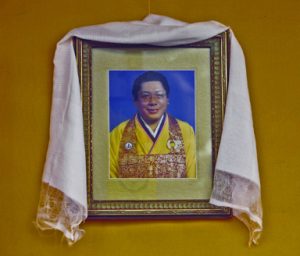
After deciding to move further into a serious study of his inquiries on Buddhism and Asian traditions, Ginsberg arranged to spend a retreat period with Gary Snyder at his farm in California in 1971, where they discussed meditation, yoga, and mantras. While in San Francisco, Ginsberg received news that Chogyam Trungpa was going to visit the area and arranged a meeting with him. Ginsberg found the Tibetan man on the night of their arranged meeting, intoxicated, having fallen on a hotel balcony. Ginsberg spoke to Trungpa that night of his deleterious reading tours which were characterized by redundancy and exhaustion. He was challenged by the Tibetan lama to use spontaneity in his reading and poetry writing (Schumacher 259). Following the advice he received from Trungpa, Ginsberg shaved his beard and attempted for the first time to revise his poetry readings, becoming more spontaneous at a benefit reading for a meditation center Trungpa was trying to create (Schumacher 551). After this event, the teacher-student relationship between the poet and the lama blossomed quickly.
In 1972, almost two years after their meeting, Ginsberg took both the Refuge and Bodhisattva Vows under the guidance of his teacher and received his dharma title, Dharma Lion. That same year, Philip Whalen took his Refuge Vows separately and committed to the practice of Zen Buddhism (Prothero 19).
As part of the formal arrangement between Ginsberg and his teacher, Ginsberg agreed to act as a “poetry guru” to his master, while Trungpa maintained the role of meditation instructor (Schumacher 275). Ginsberg and Trungpa established an ongoing correspondence of study and instruction and in 1973 Ginsberg attended a retreat where he taught poetry to the group of practitioners in attendance. Here, he composed a Buddhist inspired poem titled “Mind Breaths” that would in some ways solidify his image as a Buddhist poet to the community of practitioners, or sangha, to whom he was connected (Schumacher 576). In fact, it was his commitment to both his Buddhist practice and his experience as a poet that led him to establish the Buddhist poetics school at Trungpa’s Buddhist learning institution, Naropa, of Boulder, Colorado, in 1974, which he named after his friend, calling it the Kerouac School of Disembodied Poetics (Schumacher 585).
The impact that Buddhism had on Ginsberg’s poetry was profound. The poet himself was much aligned to an intellectual contemplation and spiritual integration in his poetic works, but Buddhism provided him with a framework to cohesively begin uniting the spiritual and psychological (Trigilio 23). In “Angkor Wat” Ginsberg blends his two practices, citing the Refuge prayer. The poem is significant because it represented a boundary-less merging of Buddhism with the poet’s life where he openly reflected on whether his same-sex desires could peacefully coexist with his tradition (Trigilio 30).

For the other remaining Beats, Buddhism maintained a presence that influenced their written work and daily lives, counteracting much of the early criticism they received for breeding an American form of Buddhism that was overtly literary and uninformed. Philip Whalen had traveled to Kyoto in 1969 where he studied traditional Japanese Zen for several years, before returning to live at the San Francisco Zen Center where he received ordination as a monk. In 1975, Whalen became head monk at the Zen Mountain Center of Tassajara Springs, California, making him one of the first generation American Buddhists who integrated a Western lifestyle with an Eastern spiritual tradition and integrated his experiences into his poetry (Tonkinson 194). Gary Snyder, upon returning from his Zen training in Japan, won the 1975 Pulitzer Prize for his collection of poems titled Turtle Island, which was a unique blend of his ecological philosophy and Zen lifestyle. Snyder later moved to the Sierra Nevada Mountains where he founded a small practice center for friends called the Ring of Bone Zendo.
Stephen Prothero attributes the Beats and their literary works on Buddhism with defining a historical period where the transmission of Buddhism to America began a new spiritual legacy in the West (3). Much of what the Beat writers accomplished in popularizing Buddhism in America can be understood in terms of the movement of culture and literary work, collectively. Locating the trajectory of ideas as they spread from the page to the reader is mostly intuitive speculation. The number of people who were influenced by Buddhist references in the novels of Jack Kerouac, or the poetry of Allen Ginsberg, Gary Snyder, or Philip Whalen is unknown, but it remains relevant to note the parallels between American spiritual exploration of the 1960s counter-culture and the published work available that had been written by Beats almost a decade before.
It is appropriate to call the Beats pioneers of their time and endow them with a counter confirmation of their ability to allocate the spiritual cure for the culture’s illness through their alternative approaches to living, thinking and to their literary documentation of their lives. Buddhism provided the Beats with a framework that overcame their Judeo-Christian heritages and gave them an insight into their sense of alienation caused by the rampant religious and political hegemony of their time. Their novels and poems provided a voice to the alienated and disenfranchised minds of America. More than anything, it can be said that Buddhism provided relief for the writers and taught them a way to sustain their ideals while paradoxically allowing them to release their misfortunes, sorrows, and short-comings into the void, or Shunyata; this is where their blues dissolved and luminously revealed a transcendent poetry that became the seat of their written words.
Works Cited
Campbell, James. This Is The Beat Generation: New York-San Francisco-Paris. Berkeley: University of California Press, 2001.
Charters, Ann. Kerouac: A Biography. New York: St. Martin’s Press, 1994.
Edington, Stephen D. The Beat Face of God: The Beat Generation Writers as Spirit Guides. Nashua: Trafford Publishing, 2005.
Ellwood, Robert S. The Fifties Spiritual Marketplace: A Decade of Religion in a Decade of Conflict. Rutgers University Press, 1997.
Fields, Rick. How the Swans Came to the Lake. Boston: Shambhala Publications, 1992.
Kerouac, Jack. Mexico City Blues: 242 Choruses. New York: Grove Press, 1994.
Kerouac, Jack. The Dharma Bums. Penguin Classics, 2006.
Lang, Richard. “Daisetsu Suzuki.” Headless.org. 1999. 14 March 2009.
Magee, Mike. “Meditation (Dhyana).” Shiva Shakti Mandalam. 1995. 14 March 2009.
Nicosia, Gerard. “Sermon, October 7, 2006.” First Unitarian Universalist Church of San Francisco. 7 October 2006.
Prothero, Stephen. Introduction. Big Sky Mind: Buddhism and the Beat Generation. Carole Tonkinson. New York: The Berkley Publishing Group, 1995. 1-20.
Schumacher, Michael. Dharma Lion: A Biography of Allen Ginsberg. New York: St. Martin’s Press, 1992.
Seager, Richard Hughes. Buddhism in America. New York: Columbia University Press, 1999.
Skerl, Jennie. Reconstructing the Beats. Palgrave Macmillan, 2004.
Suiter, John. Poets on the Peaks: Gary Snyder, Philip Whalen, and Jack Kerouac in the Northern Cascades. Washington D.C.: Counterpoint, 2002.
“The Four Noble Truths.” thebigview.com. 1 February 2009. 14 March 2009.
<http: //www.thebigview.com/buddhism/fourtruths.html&rt;
Triglio, Tony. Allen Ginsberg’s Buddhist Poetics. Southern Illinois University Press, 2007.
Tonkinson, Carole, ed. Big Sky Mind: Buddhism and the Beat Generation. New York: Riverhead Books, 1995.
Watts, Alan. “Beat Zen, Alan Watts.” 29 March 2009.
<http: //www.bluesforpeace.com/beat_zen.htm>
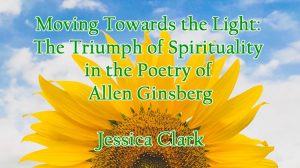


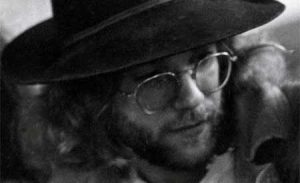

Sam Silva says
empty mirror is my favorite and certainly one of the best literary publications in the online world
Alfred K. LaMotte (Fred) says
I’ve been waiting for this comprehensive article since I first encountered Kerouac, the great Japanese Haiku poets, and Alan Watts’ ‘Way of Zen’ when I was in the eighth grade. Thank you for a great and well-balanced article! I will share it with my facebook community.
I regard ‘Dharma Bums’ as one of the great American novels: not because it presents Buddhism accurately, but because it is about the pathos of the American seeker, mingling the Dharma with all his addictions. It also contains passages of great beauty and wonder, refracting the rays that shine from the broken heart of the Bodhisattva.
““I’m not a Buddhist anymore, I’m not anything. I don’t care. I do care about hearts…”, says it all.
Thanks again!
Sam Silva says
fascinating and detailed essay